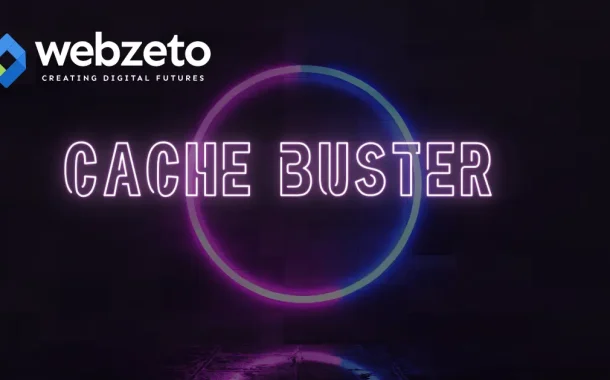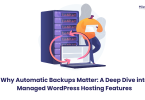The importance of cache busting lies in its ability to deliver fresh content consistently. It ensures users always access the latest updates, improving user experience. It also helps in fixing bugs and deploying new features effectively. By keeping content current, cache busting enhances performance and reliability, crucial for maintaining a website’s functionality and user trust.
Table of Contents
What is a Cache Buster?
A cache buster is a technique used to ensure that users see the most up-to-date version of a website or web application. It prevents browsers from loading old, cached versions of files like HTML, CSS, JavaScript, or images by forcing them to fetch the latest versions from the server. Browsers save copies of web files to load pages faster on return visits. However, this can cause users to see outdated content when updates are made. Cache busting solves this by altering file names or adding version numbers, forcing the browser to load the new files.
Cache busters work by modifying the URL of the files. One common method is adding a query string parameter, such as file.js?v=2. This change tells the browser that the file has been updated, prompting it to download the latest version. Another approach is changing the file name itself, like file.2.js, ensuring the browser recognizes it as a new file. Additionally, cache-control headers can be used to manage cache behavior, instructing the browser on how to handle specific files.
Implementing cache busters is crucial for delivering fresh content consistently. It ensures users always access the latest updates, improving their experience. This technique is particularly important when fixing bugs or deploying new features, as it prevents old, cached files from causing issues. By keeping content current, cache busting enhances performance and reliability, which are essential for maintaining a website’s functionality and user trust.
Types of Cache Busting Techniques
Cache busting is crucial for ensuring users always see the most recent version of a website.
1. Query String Parameters
Adding a version number or timestamp to the URL of a file, such as file.js?v=2 or style.css?version=1627891234, signals to the browser that the file has been updated. This forces the browser to download the new file instead of using the cached version. It’s easy to implement and widely used.
2. File Renaming
Changing the name of a file each time it is updated ensures that the browser treats it as a new file. For example, renaming script.js to script.v2.js or style.css to style.20210614.css makes sure the browser loads the updated file. This method is effective and straightforward.
3. HTTP Headers
Using cache-control headers in the server’s HTTP response can direct the browser on how to handle caching. Headers like Cache-Control: no-cache, Cache-Control: no-store, or Expires: 0 can prevent the browser from caching files and ensure it always fetches the latest version from the server. This gives more control over caching behavior.
4. Cache-Control Directives
Specific directives can be set in the server’s response to manage caching behavior. For example, Cache-Control: max-age=0 or Cache-Control: must-revalidate instructs the browser to check for updates before using the cached version, ensuring the content is current. These directives are powerful tools for cache management.
5. Fingerprinting
This technique involves adding a unique hash or fingerprint to the file name, such as main.9c0a2f3.js or style.5d41402.css. The hash changes whenever the file content changes, ensuring the browser recognizes it as a new file and downloads the updated version. It’s a reliable method to ensure freshness.
Implementing Cache Busters
Implementing cache busters effectively is key to ensuring users always receive the most up-to-date content.
Best Practices for Cache Busting
- Consistent Versioning: Use a consistent versioning strategy for your files. This can be based on timestamps, version numbers, or hash values. Consistency helps in tracking changes and ensuring updates are recognized by the browser.
- Automate the Process: Automate the cache busting process using build tools or scripts. Tools like Webpack, Gulp, or Grunt can automatically append version numbers or hashes to file names during the build process.
- Integrate with CI/CD: Integrate cache busting into your continuous integration/continuous deployment (CI/CD) pipeline. This ensures that every deployment automatically updates file versions, minimizing the risk of users seeing outdated content.
Tools and Libraries for Cache Busting
- Webpack: Webpack is a powerful module bundler for JavaScript applications. It can generate unique hashes for each file, ensuring they are updated correctly.
- Gulp: Gulp is a task runner that can automate tasks like minification, concatenation, and versioning. Plugins like gulp-rev can append hashes to file names.
- Grunt: Grunt is another task runner that can be used for automating cache busting. Plugins such as grunt-filerev help in appending version numbers or hashes to files.
Examples of Cache Busting in Different Contexts
- Web Development: In a typical web development workflow, cache busting can be implemented by using a build tool like Webpack. During the build process, Webpack can generate unique hashes for each JavaScript and CSS file. For instance, main.js becomes main.9c0a2f3.js. This updated file is then referenced in the HTML file, ensuring the browser loads the new version.
- API Requests: For API requests, cache busting can be implemented by adding a timestamp or version number to the API endpoint URL. For example, https://api.example.com/data?version=1627891234 ensures the browser fetches fresh data from the server.
- Content Delivery Networks (CDNs): CDNs often cache static assets to improve performance. Cache busting with CDNs can be achieved by appending version numbers or hashes to file URLs. This ensures the CDN serves the latest version of the file to users.
Potential Drawbacks of Cache Busting
While cache busting is essential for ensuring users receive the most current content, it also comes with some potential drawbacks.
- Increased Server Load: Cache busting can lead to increased server load because users are forced to download new versions of files more frequently. When cache busting is implemented, every user will need to download the updated files, potentially causing a spike in server requests and bandwidth usage.
- Slower Load Times: Forcing the browser to fetch new files instead of using cached versions can result in slower page load times for users. This is especially noticeable when large files, such as high-resolution images or complex scripts, are involved. Slower load times can negatively impact user experience and increase bounce rates.
- Complexity in Management: Managing cache busting can add complexity to the development process. It requires careful versioning and updating of file references across the application. Automated tools can help, but they also require setup and maintenance, adding to the overall complexity of the project.
- Inconsistent Behavior: In some cases, improper implementation of cache busting can lead to inconsistent behavior where some users still see outdated content. This can happen if the cache buster isn’t applied uniformly across all resources or if there are issues with the deployment process.
- Increased Development Effort: Implementing an effective cache busting strategy can require additional development effort. Developers need to ensure that every static resource is versioned correctly and that references to these resources are updated. This can be time-consuming and might require changes to the build and deployment processes.
- Dependency on Build Tools: Relying on build tools and automation scripts for cache busting means that any issues with these tools can disrupt the deployment process. If the build tool fails to correctly update version numbers or file hashes, users might end up with broken or outdated content.
FAQs
Q. How does cache busting affect SEO?
Cache busting generally doesn’t negatively impact SEO if implemented correctly. Search engines index the new versions of files, ensuring the latest content is available.
Q. Can cache busting be applied to images?
Yes, cache busting can be applied to images by adding version numbers or hashes to their URLs, ensuring users always see the updated versions.
Q. Is cache busting necessary for small websites?
Cache busting is beneficial for all websites, regardless of size, to ensure users always see the latest content and updates.
Q. Does cache busting work with mobile apps?
Yes, cache busting techniques can be used in mobile apps, particularly for web-based content within the app, ensuring users get the latest updates.
Q. How often should cache busting be used?
Cache busting should be used whenever files are updated or changed. Automating the process ensures that it happens consistently with every deployment.
Conclusion
Cache busting is a vital technique for ensuring that users always see the most up-to-date version of a website or web application. By modifying file URLs with version numbers, timestamps, or unique hashes, cache busting forces browsers to fetch the latest files from the server. This prevents issues caused by outdated cached content and improves user experience.
Implementing cache busting effectively can be done using various methods, such as query string parameters, file renaming, and HTTP headers. While there are some potential drawbacks, such as increased server load and complexity, the benefits far outweigh the negatives. Ensuring users always access fresh content is crucial for maintaining a reliable and functional website.














